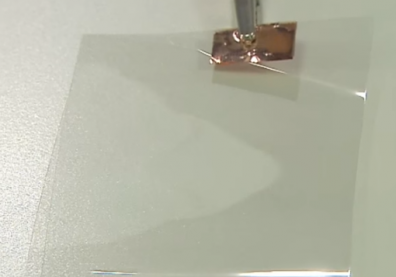The relatively new wonder-material graphene has created a lot of hype in the science and tech worlds, with scientists offering promises of breakthroughs in several fields. Its nature as a strong, light, nearly transparent and super-conductive material affords it the ability to do things previously impossible with others, and research into it won two scientists a Nobel Prize. The latest suggestion is that night vision contact lenses are within reach with graphene, along with other uses.
Contact lenses are often the subject of future-tech due to their inconspicuous nature and tiny form. Size in particular is a major draw-think of how large night vision goggles are and how few people outside of certain professional fields use them. Using layers of the super-thin graphene to contain the heat given off by night vision tech, it is certainly possible to make heat-sensing eye lenses, scientists explain.
"We can make the entire design super-thin," said Zhaohui Zhong, assistant professor of electrical and computer engineering at the University of Michigan. "It can be stacked on a contact lens or integrated with a cell phone. "Our work pioneered a new way to detect light. We envision that people will be able to adopt this same mechanism in other material and device platforms."
Night vision goggles as we know them are so large because they require cooling systems so that the device's own heat doesn't confuse the sensors. In a graphene device or lens, the material does the insulating work on its own with just a few layers--graphene is only one atom thick. The full explanation of the physics behind the light-detecting process can be found on University of Michigan's site here.
Source: The Independent






